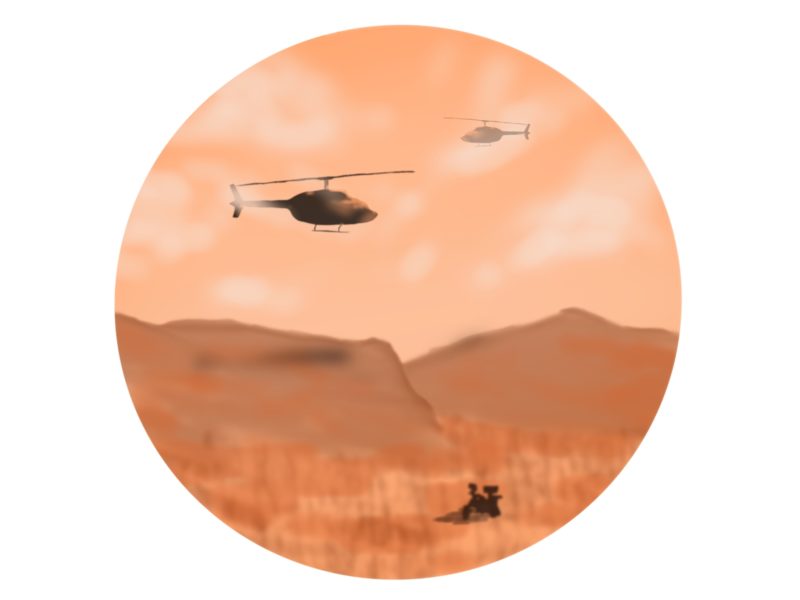From his deep connection with the acclaimed Prehistoric Journey at the Denver Museum of Nature and Science to his newest discovery of a mastodon fossil in Snowmass, Colorado, lovingly deemed “Snowmastodon,” the Denver Museum of Nature and Science’s Dr. Kirk Johnson’s work is revolutionizing the way geoscientists and the public look at the Earth’s fossil past. “I am a shovel scientist,” Johnson explained, “I believe that truth comes from the tip of a shovel.”
For the past few years, a war has seemingly been waged over what killed off the dinosaurs along with a significant amount of the species present between the Cretaceous and Tertiary periods. As Johnson explained, about 31 years ago geoscientists began to consider the idea that an immediate catastrophe, rather than a long drawn out process, was responsible for one of the largest extinction events in the Earth’s history. A large amount of the suspicion came from the presence of a rare element, Iridium, within a few highly concentrated beds found between the Cretaceous and Tertiary periods. While the Earth does possess this element, it was believed that a heightened concentration of this element in a non-mineralized setting could only be due to a meteor impact.
Conveniently, a large meteor impact could deliver the necessary global changes to cause a massive global extinction.
Paleontology focuses not only on specific creatures and their environments but how they change. “All of the good stuff is still in the ground,” Johnson reflected. The more data that can be recovered, the more scientists can figure out about the past. Unlike the world of today, which is termed an icehouse world, the past world was a greenhouse world. There were no ice caps, the sea temperature was considerably warmer and tropical forests covered the world. Due to the high enrichment of oxygen and the temperatures, flora and fauna were able to grow to enormous sizes. For example, the dinosaurs are the largest land-dwelling creatures ever. “Paleontology lets you see the improbable,” said Johnson as he brought up a picture of a flying dinosaur the same size as a giraffe.
Another aspect of Johnson’s work is that of leaves and plants. While dinosaurs are incredibly interesting, especially to the public, to a scientist, there lies a much larger volume of data in plants. “A chip of mudstone will not give you 10,000 dinosaur fossils,” revealed Johnson, “on the other hand, a chip of that same rock can easily have 10,000 pollen grains.” The shear amount of pollen grains available can reveal quite a bit about the environment at a specific instant in time. The problem with these pollen grains lies in their extremely minute size. Analyzing them requires a lab with the right equipment, and because of this, it requires a significant amount of work to pinpoint the exact location of the K-T boundary in the rock record.
One problem with imagining the impact is the shear scale of it. “To cause an extinction you have to kill them all, you cannot have even a small population left,” said Johnson. While animals are fairly vulnerable to extinctions, plants are fairly resilient. Even if a tree is chopped in half, some aspect of it can still live. So, in a situation where more than half of the variety of pollen grains are lost across the K-T boundary, it is easily proved that this event was a very significant moment in the history of life.
Where the problem currently lies and where the conflict is born is the actual time. Prior to some of the more recent advances in dating, even an error of a million years was small enough to be desired. Due to some analysis techniques of the beds surrounding the event, the error can be brought down to around 20,000 years; Johnson said, “20,000 years is hardly an instant, but is is better than a million years.
Another focus of the lecture was on what happened after the impact close to home. Where the current Colorado climate is dry and high in elevation, in the several million years following the K-T impact, the front range was significantly wetter and actually had one of the first truly modern rainforests. Johnson brought up a few slides that showed road work near Castle Rock where construction workers had uncovered leaf prints from palm trees that were as big as tables. Along with these, they have found leaves that had evolved features that deal with amounts of water in the range of 80 inches per year. Even closer to the boundary though, Johnson has found that there was a very large diversification of ferns. Unlike conventional plants which require other plants to breed, fern spores can grow without having contact with other ferns, thus they can easily grow after an area has been devastated. Most K-T boundaries around the world can be identified by a higher amount of spores within the rock units.
While the general consensus appears to be directed towards the meteor impact hypothesis, there are those that propose a different event. Before the impact was hypothesized, the destruction of the dinosaurs was placed on global climate change from the Deccan Traps on the Indian sub-continent. These basalt flows were large in scale and matched up to an extent with the timing of the K-T boundary. The problem with this theory is that it cannot be reduced down by dating by current techniques, and the dating techniques used on the actual K-T beds have started to place them outside the realm of the Deccan Traps. Though it is unlikely that the exact reason will be found within the next few years, by looking at the effects of whatever caused the extinction scientists and the general public can get an idea of what environmental effects to look for that may cause a massive extinction in this era.


'Catastrophic impacts and precision dating' has no comments
Be the first to comment this post!